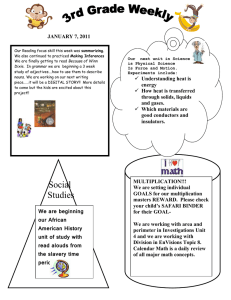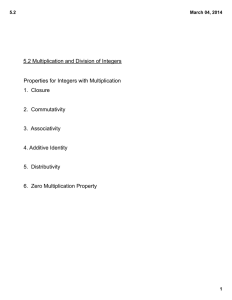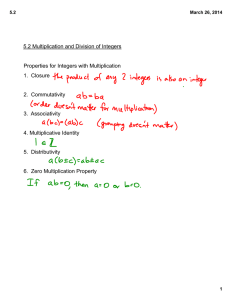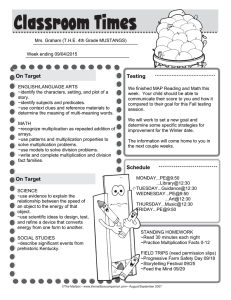Mathematics 366 Homework (due Nov. 4) 52) A. Hulpke
advertisement
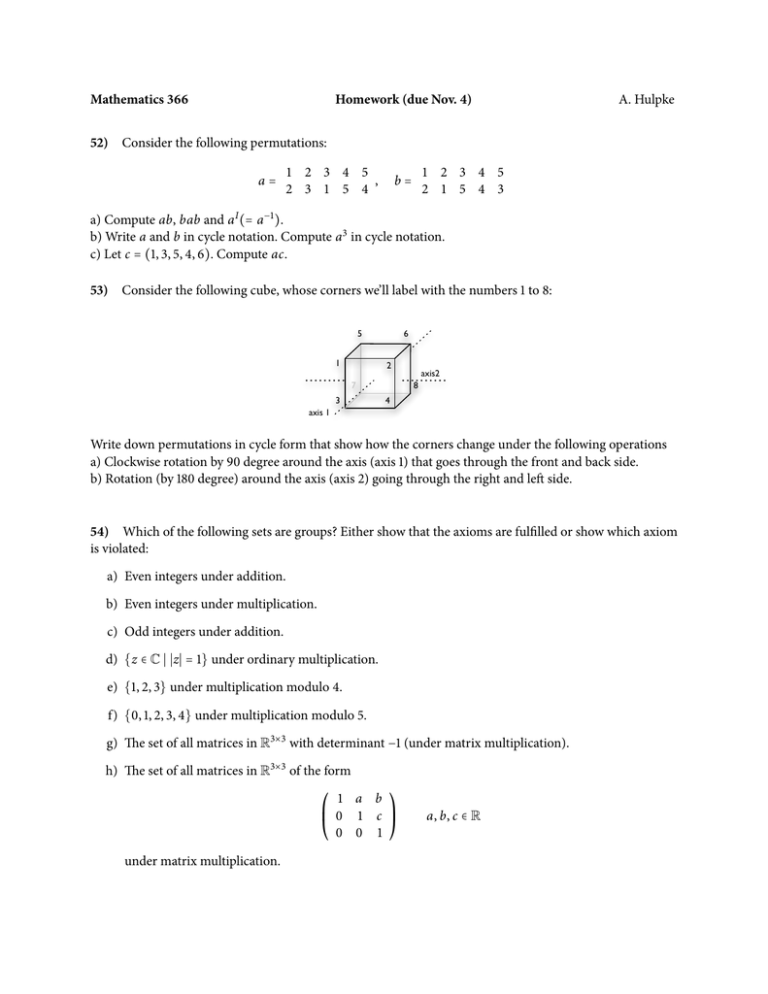
Mathematics 366
52)
Homework (due Nov. 4)
A. Hulpke
Consider the following permutations:
a=
1 2 3 4 5
,
2 3 1 5 4
1 2 3 4 5
2 1 5 4 3
b=
a) Compute ab, bab and a I (= a −1 ).
b) Write a and b in cycle notation. Compute a 3 in cycle notation.
c) Let c = (1, 3, 5, 4, 6). Compute ac.
53)
Consider the following cube, whose corners we’ll label with the numbers 1 to 8:
5
1
6
2
7
3
axis2
8
4
axis 1
Write down permutations in cycle form that show how the corners change under the following operations
a) Clockwise rotation by 90 degree around the axis (axis 1) that goes through the front and back side.
b) Rotation (by 180 degree) around the axis (axis 2) going through the right and left side.
54) Which of the following sets are groups? Either show that the axioms are fulfilled or show which axiom
is violated:
a) Even integers under addition.
b) Even integers under multiplication.
c) Odd integers under addition.
d) {z ∈ C ∣ ∣z∣ = 1} under ordinary multiplication.
e) {1, 2, 3} under multiplication modulo 4.
f) {0, 1, 2, 3, 4} under multiplication modulo 5.
g) The set of all matrices in R3×3 with determinant −1 (under matrix multiplication).
h) The set of all matrices in R3×3 of the form
⎛ 1 a b ⎞
⎜ 0 1 c ⎟
⎝ 0 0 1 ⎠
under matrix multiplication.
a, b, c ∈ R
i) For a given real number c, the numbers in (−c, c) with operation (this is the addition of velocities in
special relativity)
x+y
x○y=
1 + x y/c 2
Hint: You do not have to prove again statements we have proven more generally in the lecture (for example:
Addition and Multiplication of complex numbers is associative, matrix multiplication is associative), but can
just refer to it.
Do not forget to check that the set is closed under the operation and that inverse elements are indeed in the
set!
55∗ ) The Irish postal service (this is a true story) used a machine (“automatic letter facer”) to turn letters in
the right position for checking and validating the stamp. For this, it uses a mechanism that can (for example
by “tipping the letters over”) perform the following transformations:
The machine then uses a stamp detector (S) that indicates whether a valid stamp was found in the upper right
corner of the letter.
It applies the following checking process:
yes
Input- S
-
?no
Accept
6
b
?
S
yes
-
no ?
b
@
Rc -
6
yes
S no- c
yes
-
a
-
S no Reject
Apparently the people who built the machine did not realize that {id, a, b, c} form a group under composition. This makes it possible to simplify the construction:
a) Compute the multiplication table for {id, a, b, c}.
b) Suggests a simplified construction that does fewer letter flips (so processing is faster)
c) The mechanism for the “rotation” a) is relatively complicated (and thus error prone). Suggest a simplified
construction in which no operation of type a) is needed (thus simplifying the engineering).
Problems marked with a ∗ are bonus problems for extra credit.

